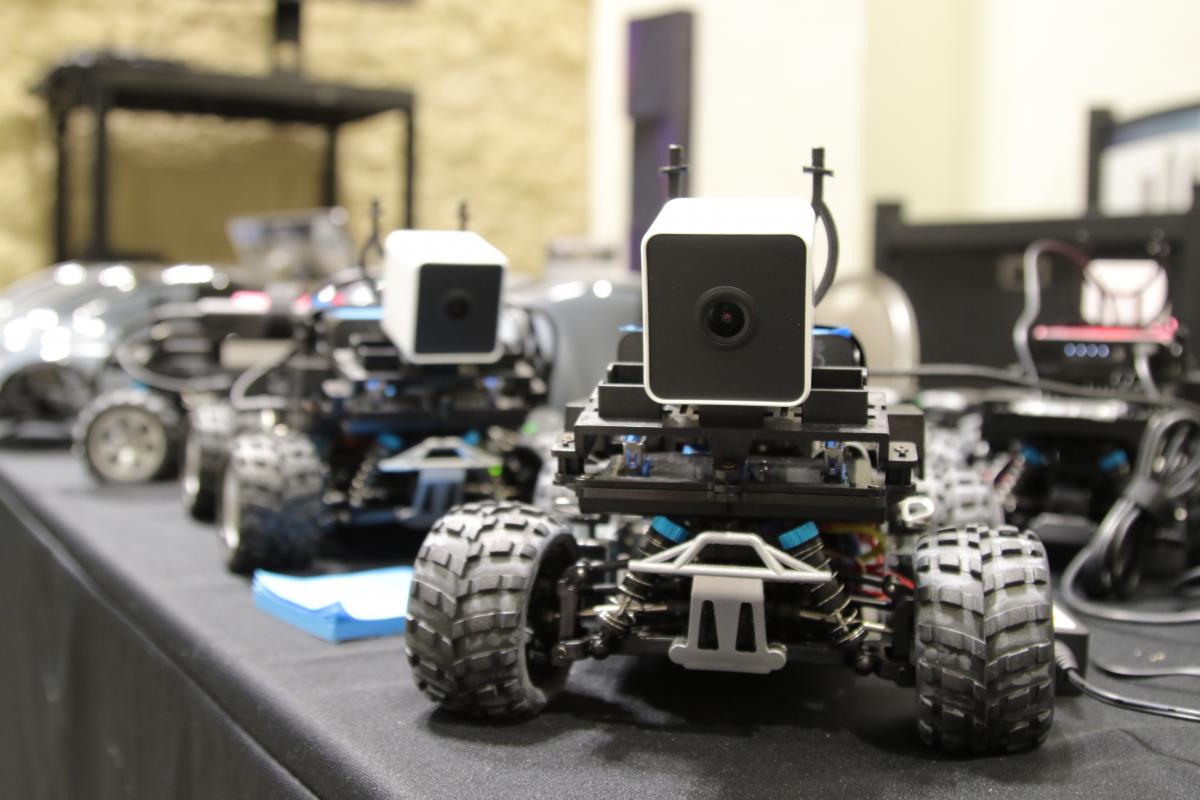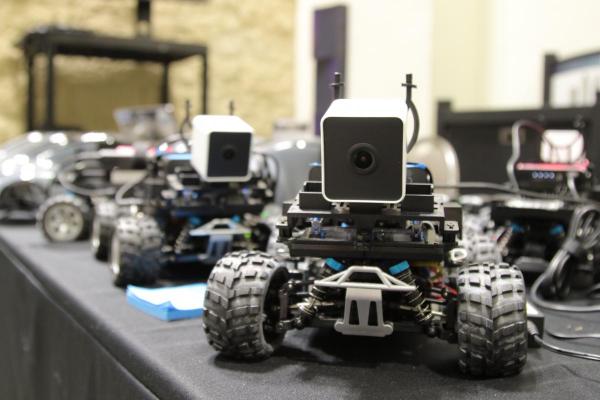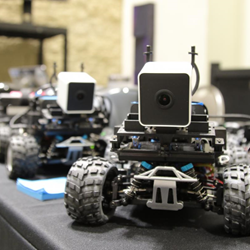
Jennifer VanRanst knew her team’s customers wanted an online tool that would help them find structural adhesive solutions more efficiently.
An outside agency had already built the wireframe for a next-generation product selector, but her team was tasked with the rest of the development – including creating an algorithm that would incorporate machine learning to narrow in on product attributes.
That’s why the timing was perfect for Hackathon19: The Curiosity Code – a 3M Corporate Research Systems Laboratory (CRSL) event that helped employees learn how to program autonomous cars, connect with others trying to integrate software into their daily work routines and tackle digital solutions that would improve workflow – like the Structural Adhesives product tool.
“You get all the people who are involved in one area,” says Jennifer, business manager for the Structural Adhesives Priority Growth Platform.
“We’re going out next week for further customer testing,” adds Katie Lahti, Corporate Insights. “There’s nothing speedier than a hackathon.”
That was a common sentiment among the more than 400 3Mers that filled the St. Paul RiverCentre hall for Hackathon19 earlier this summer. Many participants had little previous programming experience.
“In 72 hours, all of these people will go from knowing nothing about AI [Artificial Intelligence] to ‘Oh, I get AI,’” said David Frazee, technical director of 3M CRSL.
The format gives people dedicated time to focus on projects – and the proximity to people with expertise to work through challenges that come up.

3M Hackathon history
The event grew out of an Alexa Challenge hosted by the 3M CRSL on campus last year, which brought more than 100 3Mers – again, many without software backgrounds – to explore how 3M can use interactive voice technology to better serve customers in the future.
David says that event resonated through his organization and internal partners they work with.
So they decided to do another this summer – “a real hackathon,” David says.
More than 600 people took part across the globe, with teams at the convention center in St. Paul, Minnesota, as well as in the United Kingdom, Germany, China and Japan. There were even a couple of customers attending for help on their projects.
Last year’s event partner, Amazon Web Services (AWS) was back this year, along with new partners Microsoft and GitHub.
“Part of the idea was to bring software closer to the 3M community,” said Oscar Naim, digital systems platform architecture, 3M CRSL. “We’re trying to make people more comfortable with it.”
The event had two different hack paths, starting with a “learning” hack, where participants could learn about different cloud technologies, like Microsoft Azure and Amazon Web Services (AWS), following a programming “recipe” while working with experts to do something fun, Oscar says.
That included IT interns Sara Rabon and Christian Young, who were trying to connect Filtrete™ Smart Air Filters to mobile and web applications via the internet of things (IoT). They’d already spent a day learning the basics of programming and were now “trying to mold something cool out of all the information we’ve been given,” Sara says.
Christian said they understood the broad scope of what they needed to do but were now working their way through the details of making it happen.
“Our first day, it was learning to hack,” he says. “Now today it’s ‘OMG.’ It’s pretty intense.”
Global participants
The CRSL team wanted this event to be big, so reached out globally for participants. The concept of a hackathon isn’t well known globally, but teams dug right in.
In Japan, “Team Tortoise” wanted to acquire knowledge and experience using single-board computers for future robotic system development. They used software found on GitHub, assembled a small car – JetBot – and created an autonomous vehicle that used machine learning and deep learning – a robot’s version of learning by example – to navigate a table-top course.

In England, four teams wanted to solve problems related to manual testing of ergonomic issues for people suffering due to repetitive strain injuries. They designed robots to be easy-to-use so lab workers could easily and quickly repurpose them to assist with experiments. Organizer Claire Donoghue, software specialist with 3M UK & Ireland, said the work would ultimately help reduce safety issues and increase experiment through put in the lab.
In Germany, nine teams focused on project hacks in robotics, AI, IoT and modeling to address topics like overcoming complex production challenges with abrasives, implementing sales forecasting, predicting web breakages on a manufacturing line and creating simulations of VHB-bonded displays in vehicles for customers.
“We got to know the concept of a hackathon, which will be important for the future,” said Markus von Hoegen, mechanical design engineer with 3M Central Europe Region. “We had a great time as a team, strengthening our team spirit.”

Collaborating on digital challenges
Back in St. Paul, divisions brought in problems they wanted to explore and had multidisciplinary teams working to come up with solutions.
At the “Scrum Sum” table, Nathaniel Andersen and teammates wanted to use digital technologies to help them more automatically time-plan their Agile scrums. A digital camera was pointed at a board of Post-it Notes, each with several numbers written on them. The team was working out a way to have the camera read only the upper-right numbers and ignore the others.
“We’re using this as a way to learn some computer vision and machine-learning character recognition,” he said. “This will help us to plan more automatically.”
Everyone in the systems lab uses scrum, Nathaniel says, and tabulating all the Post-it Notes for agile estimation is manual and time-consuming.
The project, once complete, could be useful for a much larger group, he says.
“It would be useful to end users as well,” he says.
David Morrissey, in finance, went home at the end of the first day after hearing Microsoft talk about artificial intelligence for agriculture.
He came back that night with an indoor growing tent he uses to raise ground cherries – and help heat his basement. It puts out both dry heat and wet heat, which requires David Morrissey to adjust his furnace accordingly.
“I’m trying to build a more cohesive ecosystem,” he says.
Not long after turning on the multicolored grow lights, a group of 3Mers came up to start talking about the grow tent. It was the perfect place for David Morrissey to get help with his project.
“Every component on this has an expert here who can make it better.”
Multimedia Files:



